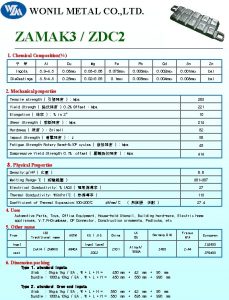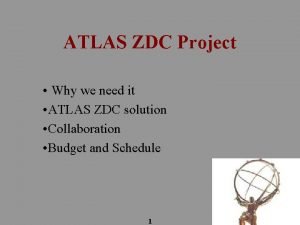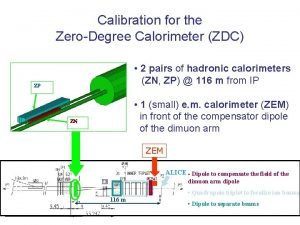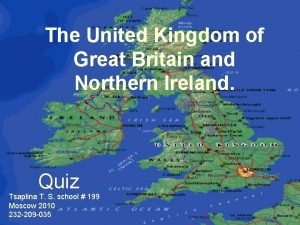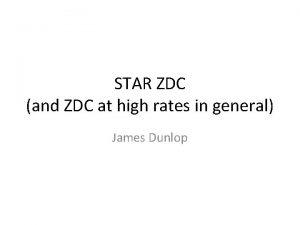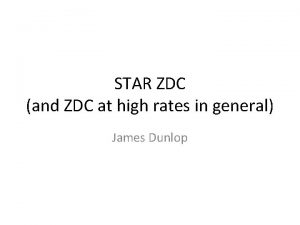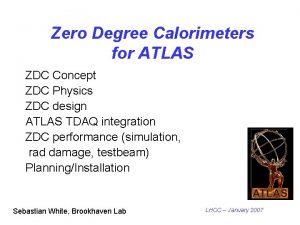ZDC Trigger Analysis ZDC conicidence trigger should consist





- Slides: 5

ZDC Trigger Analysis ZDC conicidence trigger should consist of (at least) 3 contributions: ① Hadronic collisions ② UPC (XN, XN) interactions ③ Accidental coincidences of single neutrons in ZDCP and ZDCM ③This contribution is NOT noise but rather is effectively pileup of single-sided EM UPC events. Hadronic pileup is negligible, but single-sided EM cross section is almost 40 times larger. Even this EM pileup contribution would not be much of an issue if the LHC had not delivered such spectacular luminosities. Apologies for lack of flashy graphics. Didn’t have time to make pretty plots. 11/30/18 1

Used unprescaled L 1 trigger rates to model these three contributions: ①Hadronic interaction rate was assumed to be the HF 2 rate divided by 0. 8, guessing that HF 2 missed ~20% of peripheral events. Not meant to be an exact value but should not be too far off. ②Double-sided UPC cross section is approximately equal to the hadronic cross section (info from MM). To model this contribution, I took the HF 2 rate and multiplied by an adjustable parameter. The best fit came using about 0. 6, which is at least in a reasonable ballpark. 11/30/18 2

③For the accidental coincidence rate, I took the ratio of ZDCM and ZDCP alone divided by Zero. Bias to get the firing rate of each calorimeter separately per beam crossing. Multiplying these two fractions gives the accidental coincidence probability per beam crossing. Multiplying that probability by the ZB rate gives the rate of accidental triggers. This last contribution falls off roughly as luminosity squared while the “real” contributions fall off linearly with luminosity. The presence of these “pileup” triggers explains why the prescaled ZDC trigger rate does not go up to the same level when the prescale column is changed. Prescale columns are tuned to give a constant rate only for a trigger that is linearly proportional to luminosity (i. e. only for “real” physics triggers). 11/30/18 3

Adding these three contributions together (with the guesstimate of 0. 8 adjustment for HF 2 ->hadronic and the roughly fitted value of 0. 6 for HF 2 -> double-sided EM) gives a predicted rate for the ZDC coincidence trigger rate. This prediction matches the measured rate to better than 1%. This agreement was found for a range of lumisections over which the HF 2 rate varied by more than a factor of 4 and the accidental coincidence rate varied by more than a factor of 18! I believe we can say with confidence that the ZDC coincidence trigger is well understood and is working as expected. 11/30/18 4

One puzzle totally unrelated to the performance of the ZDC trigger: I found that the rate of unprescaled ZDCP triggers counted by L 1 appears to be capped somehow at a level of ~650 -675 k. Hz. This is not true of ZDCM or any other L 1 trigger I’ve looked at. The ZDC coincidence shows no similar behavior. The exellent agreement discussed in the previous slides was valid for LSs in which the ZDCP trigger rate was not funky. However, reasonable agreement was also found in those LSs by assuming that the ZDCP rate should be a constant times the ZDCM rate. Quan has asked HCAL experts to look at this, although it has no bearing of any sort on the data we are taking. 11/30/18 5
